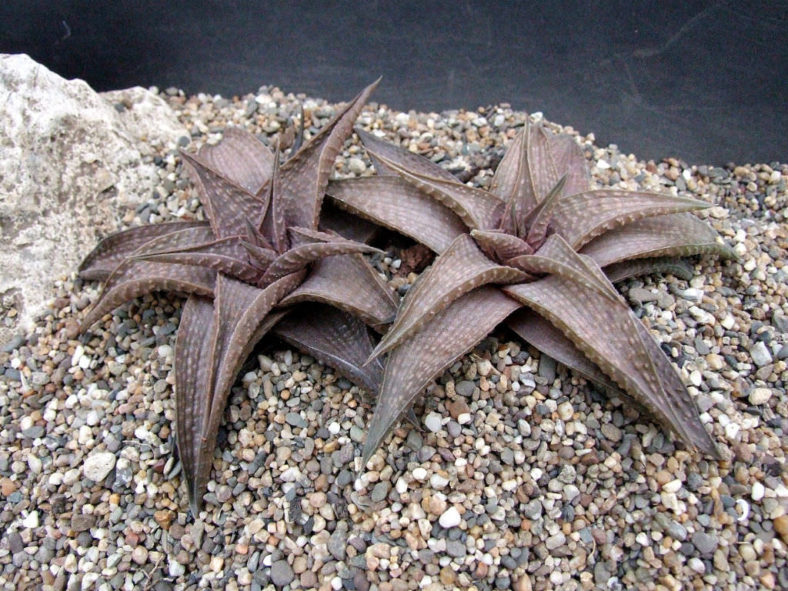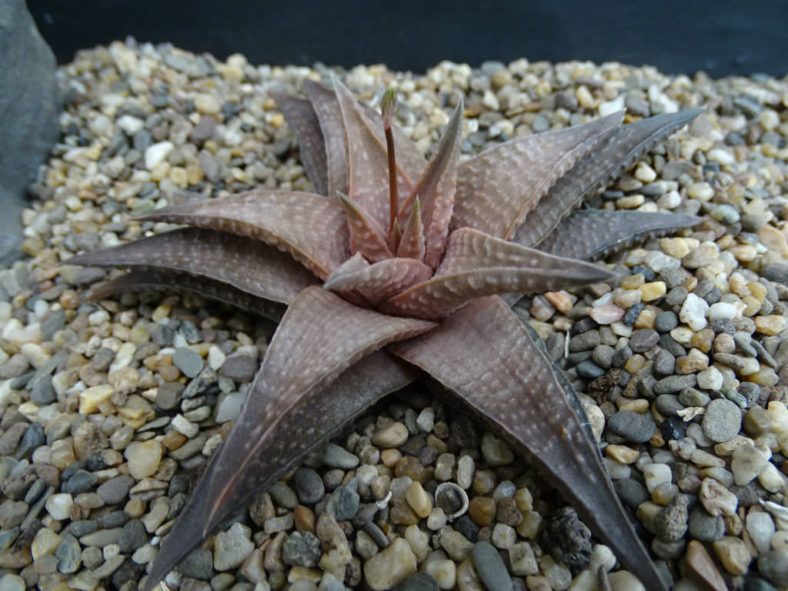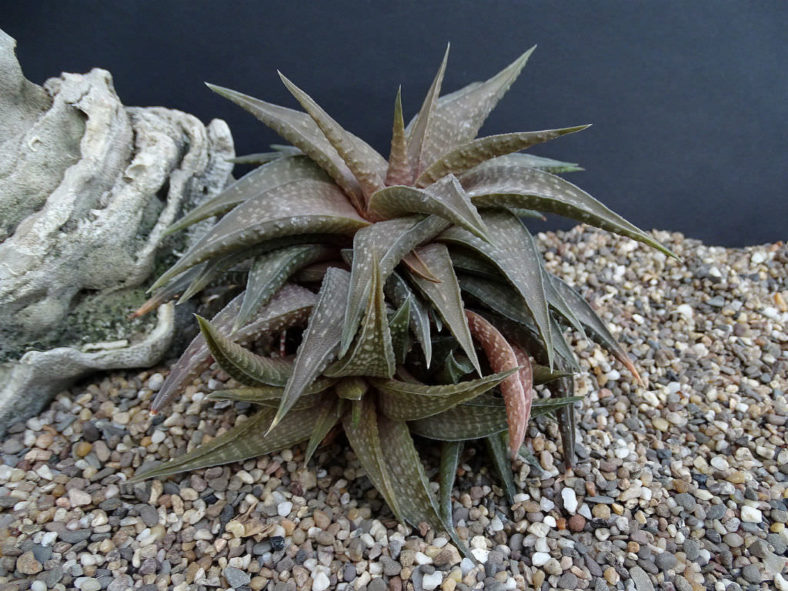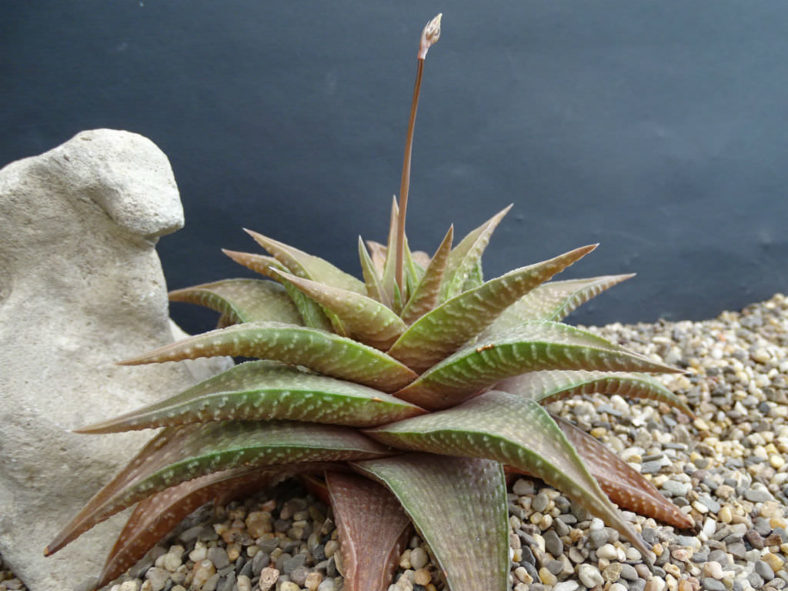Scientific Name
Haworthiopsis 'Crocodile Skin'
Synonym(s)
Haworthia 'Crocodile Skin'
Scientific Classification
Family: Asphodelaceae
Subfamily: Asphodeloideae
Tribe: Aloeae
Genus: Haworthiopsis
Origin
Haworthiopsis 'Crocodile Skin' is a hybrid created by John André Audissou. It results from a cross between Haworthiopsis koelmaniorum and Haworthiopsis limifolia var. ubomboensis.
Description
Haworthiopsis 'Crocodile Skin', formerly known as Haworthia 'Crocodile Skin', is a small succulent that forms open rosettes of long leaves with longitudinal rows of many prominent, whitish tubercles. The leaves are mid-green but develop a pinkish tinge in a stronger light.
The white flowers appear on a slender stalk, mainly from late spring to early summer.

How to Grow and Care for Haworthiopsis 'Crocodile Skin'
Light: H. 'Crocodile Skin' thrives in semi-shaded positions. However, brighter light conditions are needed to bring out the leaf coloration. Any window in your home or office will likely be appropriate for this succulent.
Soil: Use a commercial potting soil mix formulated for succulents, or make your own.
Temperature: This plant likes warmer temperatures in summer but cooler temperatures in winter. H. 'Crocodile Skin' can withstand temperatures as low as 30 °F (-1.1 °C). USDA Plant Hardiness Zones 10a to 11b, 30 to 50 °F (-1.1 to 10 °C).
Watering: In spring and fall, when the growth is most active, water H. 'Crocodile Skin' thoroughly, then wait until the top of the soil dries out before watering again. Water your plant less during the winter when its growth slows down significantly. When this plant is mostly dormant during the hottest summer months, water it just enough to keep the leaves from shriveling.
Fertilizing: H. 'Crocodile Skin' is a slow-growing plant that does not require much fertilizer. However, for optimum growth, fertilizing is a good idea. Feed only with a dilute fertilizer and only during the active growing season. Avoid summer fertilizing as this succulent is in a 6- to 8-week rest period.
Repotting: When the plant has outgrown its container, repot it in the spring or early summer into a new, slightly larger pot with fresh soil.
Propagation: H. 'Crocodile Skin' is mostly and easily grown by removing offsets from the mother plant. Remove offsets when they have started developing their roots. Spring is the best time to sow the seeds.
Learn more at How to Grow and Care for Haworthiopsis.
Toxicity of Haworthiopsis 'Onigawara'
H. 'Onigawara' is considered non-toxic to humans and animals.
Links
- Back to genus Haworthiopsis
- Succupedia: Browse succulents by Scientific Name, Common Name, Genus, Family, USDA Hardiness Zone, Origin, or cacti by Genus
Photo Gallery
Click on a photo to see a larger version.


